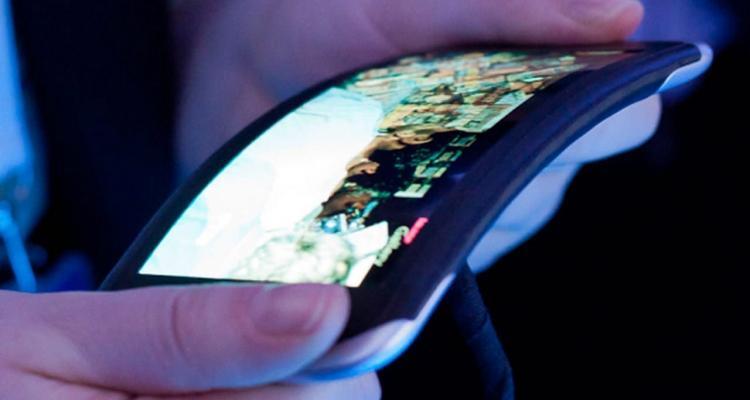
I think lately the industry has been fairly clear that we are definitely heading in a new direction with mobile technology. With bigger and better screens, wearable technology like smartwatches and smart glasses, and the introduction of curved displays, I think it's safe to say that this is a somewhat transitional phase before things start to get really strange - as in, our smartphones will be able to bend in half and instead of it being some freakish flaw, it will be an absolutely normal occurrence.
I first mentioned this possiblity several months back, when I first read about the thinnest manmade material in the world, graphene. Graphene, as it turns out, seems like it could be proven useful in many aspects of a smartphone: thin and long-lasting batteries, stronger radios and of course flexible displays. Although clearly a foreign concept to us, flexible displays seemed like something that could be rather useful in a world where smartphones can shatter at the slightest pressure to the fragile glass screens. Even with the wide distribution of stronger glass on smartphones lately, these phones are still very prone to cracks and breaks in the screen. So it would seem that although strange, flexible displays could serve a pretty great purpose in the smartphone industry.
But it's been a while since we've really seen mention of the flexible displays that we've seen displayed by Samsung during CES of 2013 - at least in the form we thought we would see it in. As it seems, the industry is taking to the flexible display of the future in baby steps, and I believe the first baby step is to introduce the curved display. These displays can be seen in Samsung's Galaxy Round, and soon LG's G Flex. Although you can't actually bend these displays or fold them in half (and they're certainly not paper thin) these phones do have some curvature to their displays that will hopefully make it easier to hold in the hand, and more difficult to break by not landing flat on its face when dropped.
Curved displays are a good first step in my opinion, but I was still left wondering when we would be seeing those flexible displays that we saw during CES, if at all. Recent news seemed to answer my question as the Wall Street Journal publishes an article going a little more in depth with Samsung's foldable mobile prototypes that they've begun showing investors. It would seem that the flexible display is not to far off in the future at all.
When I first brought up flexible displays, I saw mixed reactions from people. Some people thought that a phone with a completely flexible body would be impossible to sell people, while others would beg to differ and claim that such phones could very likely be the majority in the future of the smartphone industry. While its impossible to tell right now whether the phones with flexible displays would do well or not, from what I'm gathering, there seems to be a much higher interest in flexible displays now that it seems like the end (or beginning, as it were) is growing nearer. With Samsung's Chief Executive Kwon Oh-hyun saying that these "flexible displays" would likely start being available in 2015, it seems to be a somewhat safe bet that people who upgraded their phones this year can look forward to considering one of these phones as their next upgrade. I know for me, I'll probably consider it.
At first I wasn't sure what to think of flexible displays, but like many other new and strange ideas to come from this industry, I've found out that just because it's different doesn't necessarily mean it's bad. I didn't think I would like the Moto X's "always on sensors", but after trying one out myself I've found myself on the prowl for somebody to trade me a Moto X for my HTC One. I also didn't think I would like smart glasses, but after recently reconsidering my stance on the matter I've decided that smart glasses aren't all bad (but still a little sketchy, if you ask me). When it comes to flexible displays, well, it's almost a no-brainer. I am the type of person that drops their phone more often than they're willing to admit, so for a display to be that much harder to break, it seems well worth the consideration to take the plunge into the unknown. That is, assuming that flexible displays really are what they seem. 2015 is still a long ways away, so making any final decisions now would be silly. But when it comes to the idea overall, I'm pretty much all about the flexible displays, or anything to get rid of that dreaded feeling I get every time my phone drops mere feet from the ground, facing flat on the floor.
Please don't let there be a crack, please don't let there be a crack. I will sell my soul for there to be just a small knick in the screen, please don't let there be a crack.
I'm glad that we're finally hearing more about the flexible displays, though. I was getting a little worried that the Samsung Galaxy Round or the LG G Flex were going to be considered the "flexible display" phones (and although they're cool, they're not exactly what I had been expecting) we had been hearing about.
What about you, readers? Are you still interested in flexible displays? Do you think you'll be checking out phones with flexible displays if they're available in 2015 as your next upgrade? Let us know your thoughts in the comments below!
Images via Fone Arena, Wordpress